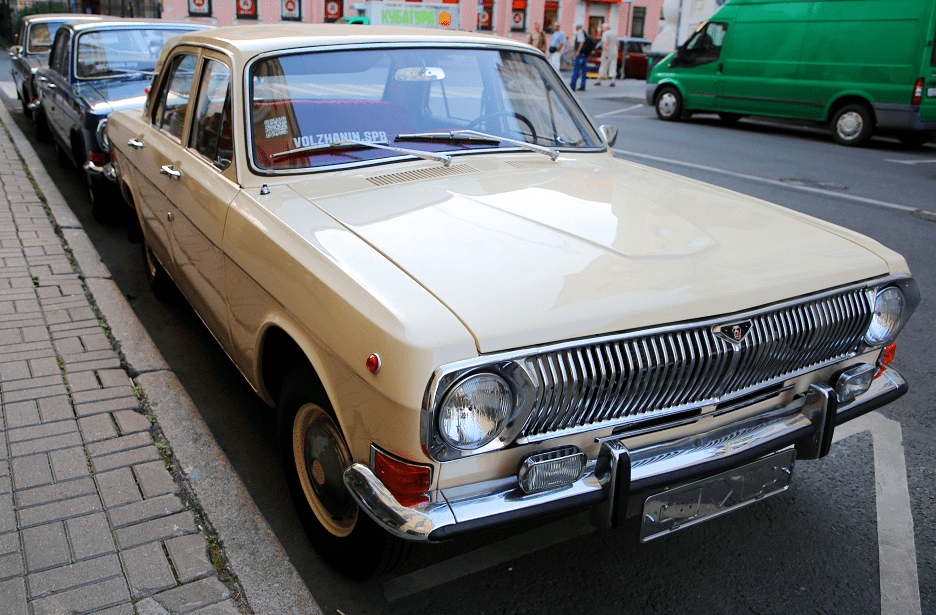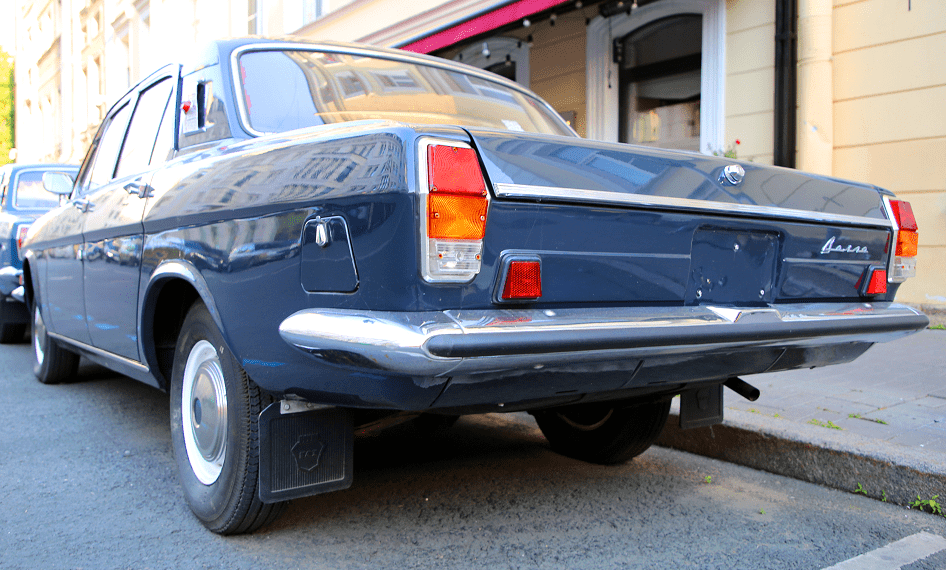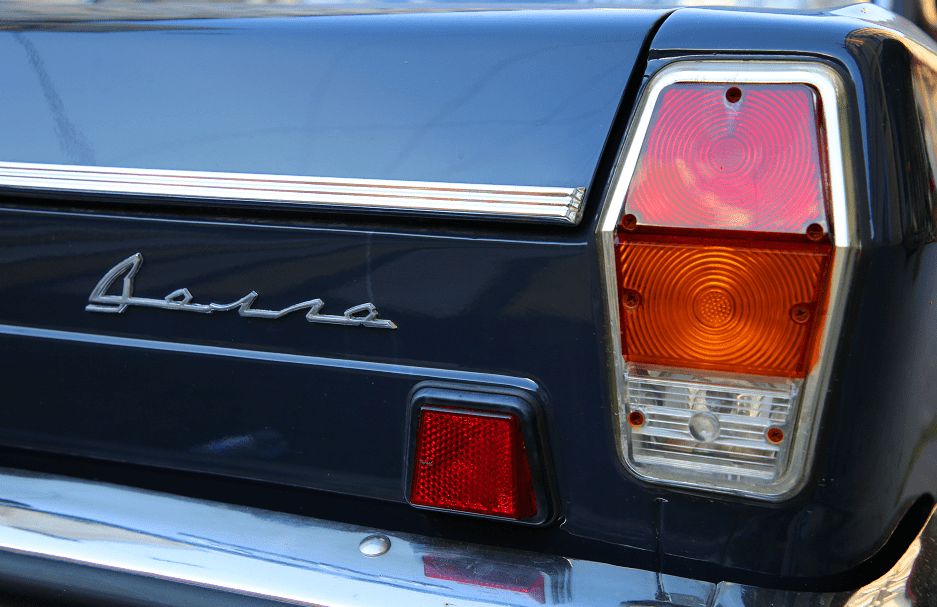GAZ-24 Volga in the Liteyny prospekt (St. Petersburg)
Development of the GAZ-24 (then called M-24) was mostly finished in 1966, when 12 of the third-series prototypes had been built and their design approved.
It was unveiled towards the end of 1967. Only 32 units were built in 1968, though, primarily for road tests, with another 215 units built in 1969.
The 1968/1969-built Volgas are often called “preserial” because full-scale manufacturing started only in 1970 (18,486 units built).
Distinctive features of the first several prototypes were two outside rearview mirrors fixed on the front fenders. Most of the preserial and all serial cars got one mirror placed on front left door.
The GAZ-24 was developed to replace the outdated Volga GAZ-21 developed in the 1950s. The new Volga had a longer wheelbase (280 cm) than the GAZ-21 (270 cm), but slightly shorter overall length (473 cm compared to 481 cm) and was substantially lower at 149 cm) compared to 162 cm.
Width remained untouched. A long wheelbase, boxier styling, bucket seats with lower bases, and a flat roof made the new Volga generously sized inside, with comfortable five- or six-passenger seating.
















